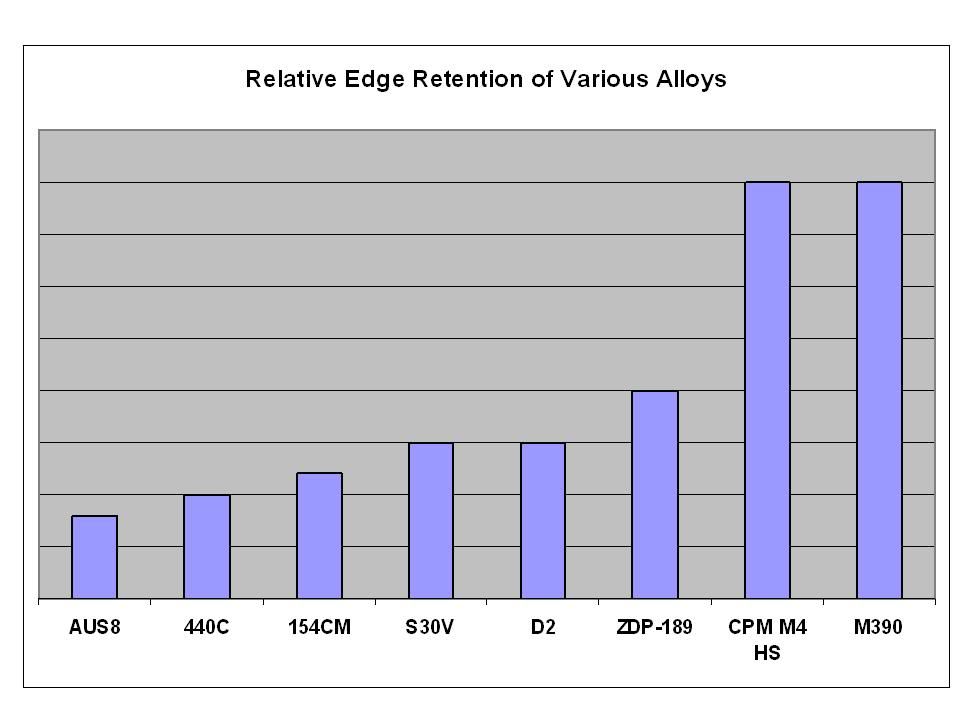Howdy
It is probably worth noting that none of these knives was heat treated to maximize edge retention. These are all standard working blades. Each has a heat treat that will provide a measure of toughness in addition to edge retention. The Crucible data sheet says you can take CPM M4 HC to a 65.5 and the Bohler data sheet says you can get M390 to almost 63. So take that into consideration when you look at my information. The results may change somewhat if the heat treats were different.
Results and discussion:
In order of retension, best at the top:
CPM M4 HC – M390
ZDP-189
S30V.
I could not differentiate between M390 and CPM M4 HC. After some runs, I thought maybe the CPM M4 was less damaged, after others, I thought the M390 had fared better. Bottom line: a tie.
What I really found significant in this comparison was the relative edge retentions of M390 and CPM M4 HC compared to those of other alloys I have tested. When testing 440C and VG10 by this method, I found that I saw enough damage to rank the alloys after ~20 cuts. To see that level of damage on ZDP-189 in this test, I had to go to 40 cuts. To see that level of damage with either M390 or ZDP-189 I had to go to 80 cuts. Now all those alloys were still easily cutting the rope after that many cuts, but that is about how many it took for me to be able to discern damage to the edge. Based on this, I made a graph to show relative edge retentions of theses alloys in comparison to some other, more common alloys:

One thing that fascinates me about this comparison is that, for a long time it's been clear that edge geometry is more important than alloy. I'm not sure if that is still clear to me. I can't help wondering if a blunter blade of M390 might not outcut a blade with better geometry, but lesser alloy. A battle for another day, I think
Thanks to Dennis for loaning the knives. I learned a lot from this comparison. I hope others find it useful, as well.
Frank R

